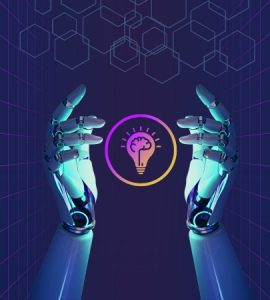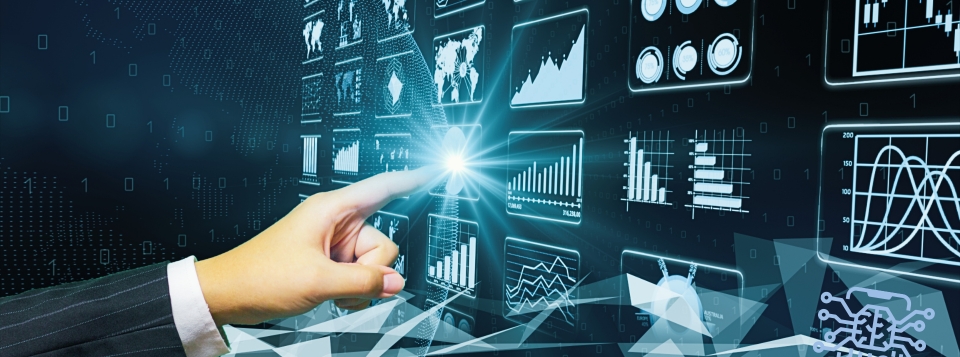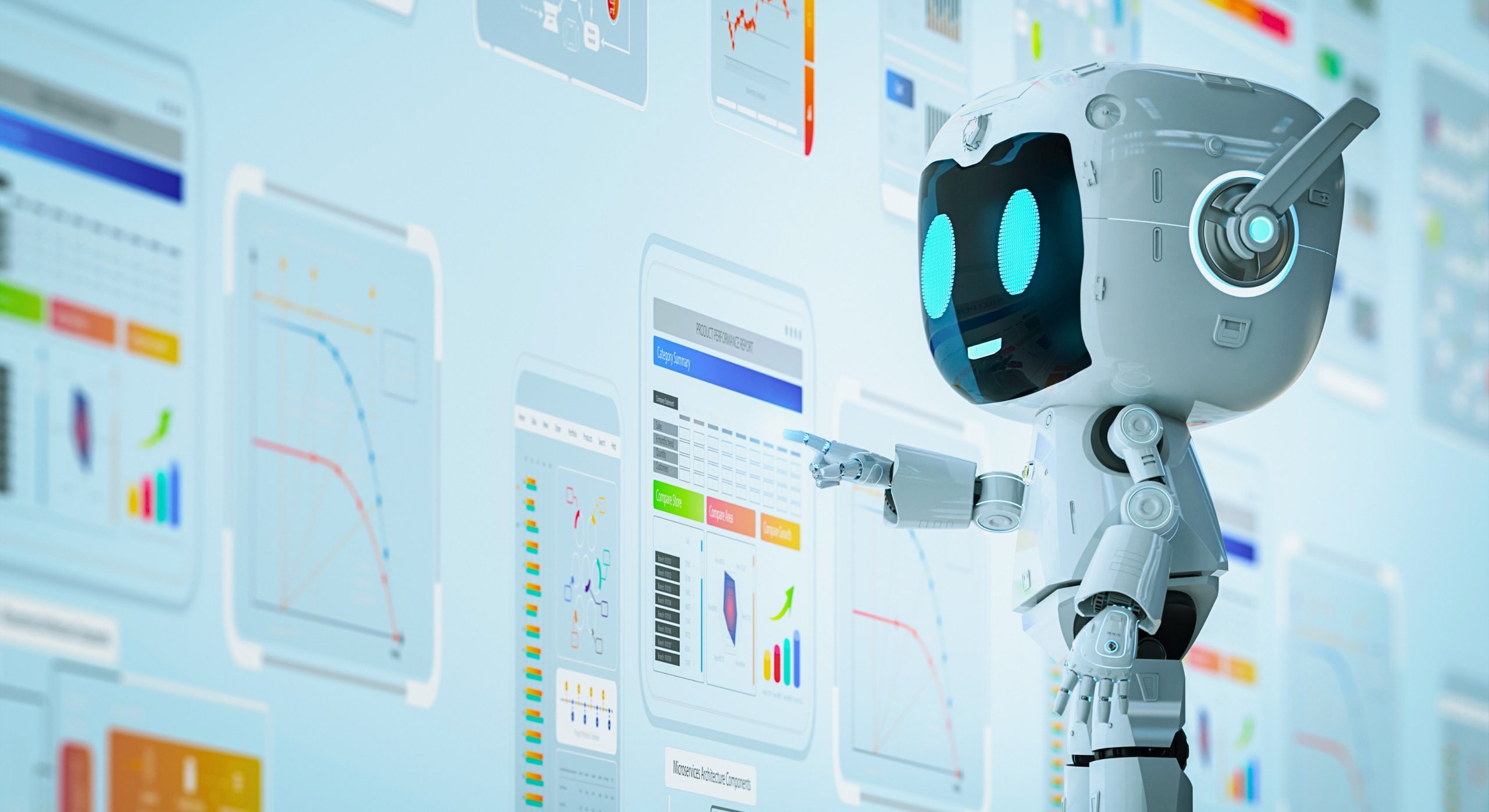Forecasting is a crucial aspect of any business strategy, enabling companies to anticipate market trends, customer behavior, and financial outcomes. With the advent of Artificial Intelligence (AI), business forecasting has evolved, becoming more accurate, efficient, and insightful. In this comprehensive guide, we will explore AI business forecasting, its key techniques, applications, and how Experion supports businesses in leveraging AI for forecasting success.
What is AI Business Forecasting?
What is Business Forecasting?
At its core, business forecasting is about peering into the future—predicting what lies ahead for a company based on historical data, statistical models, and sometimes a bit of seasoned intuition. It’s an essential tool that helps businesses plan their budgets, develop effective marketing strategies, allocate resources wisely, and prepare for potential challenges. However, traditional forecasting methods, while valuable, often have their limitations. They typically rely on linear models and are restricted by the amount of data they can process, often missing out on the nuances of market dynamics and customer behaviors that unfold over time.
The Role of AI in Modern Forecasting
Enter AI business forecasting, a game-changer in the forecasting arena. By integrating cutting-edge AI technologies like machine learning (ML) and deep learning, AI-based forecasting elevates the traditional processes to a whole new level. Unlike conventional methods, AI can sift through massive datasets from diverse sources in real time, unearthing complex patterns and delivering highly accurate predictions. This transformative capability allows businesses to stay agile and proactive, navigating market changes with confidence and precision.
Benefits of AI-Driven Forecasting
AI-driven forecasting offers several benefits:
- Enhanced Accuracy and Precision: Traditional forecasting methods often struggle with the volume and complexity of modern data. AI models, however, thrive in these environments, processing vast amounts of data with remarkable accuracy and precision. This means businesses can make forecasts that are not only accurate but also nuanced, reflecting the intricate realities of the marketplace.
- Unmatched Speed and Efficiency: In today’s fast-paced business world, speed is of the essence. AI can analyze data exponentially faster than human analysts or even traditional algorithms, providing real-time insights that enable businesses to make swift, informed decisions. This agility is crucial for staying ahead of competitors and responding to market shifts as they happen.
- Scalability and Flexibility: One of the standout features of AI models is their scalability. Whether you’re dealing with a small dataset or a massive influx of data, AI models can scale up effortlessly. They can also adapt to incorporate new variables or data sources, all without significant changes to the underlying algorithm. This flexibility ensures that the forecasting model grows and evolves alongside the business.
- Superior Decision-Making Capabilities: Ultimately, the goal of forecasting is to enable better decision-making. With AI, businesses are equipped to anticipate market trends, understand shifting customer behaviors, and foresee operational challenges with a level of clarity that was previously unattainable. This foresight empowers companies to strategize more effectively, optimize their operations, and drive growth.
Key Techniques in AI Business Forecasting

AI business forecasting isn’t a one-size-fits-all solution; it encompasses a variety of sophisticated techniques tailored to different forecasting needs and data types. These advanced methods enable businesses to harness the power of AI to make more informed and accurate predictions. Let’s dive deeper into some of the key techniques that are reshaping the landscape of business forecasting.
Machine Learning Models for Forecasting
Machine learning models are the heart and soul of AI forecasting. These models have the remarkable ability to learn from data, discern patterns, and make predictions that help businesses anticipate future trends and demands. Here’s a closer look at some of the most common machine learning models used in forecasting:
Supervised Learning
Supervised learning is like teaching a model with a “cheat sheet.” Here, models are trained using labeled data—where each input data point is paired with the correct output. This technique is particularly effective when there is ample historical data available, making it ideal for scenarios like sales forecasting or inventory management.
Imagine a teacher guiding a student step-by-step through a math problem; that’s what supervised learning does for forecasting models. Popular algorithms in this category include linear regression, decision trees, and random forests. These algorithms excel at identifying relationships between variables and can provide highly accurate forecasts based on past trends.
Unsupervised Learning
Unsupervised learning, on the other hand, is like handing a model a puzzle without the picture on the box. The data isn’t labeled, so the model has to figure out patterns and structures on its own. This technique is perfect for uncovering hidden patterns or intrinsic structures within the data that may not be immediately apparent.
Think of unsupervised learning as an exploratory adventure, where the model acts as a detective searching for clues within the data. Clustering algorithms like k-means and hierarchical clustering are widely used in unsupervised learning. They help group similar data points together, which can be invaluable for market segmentation or discovering new customer categories.
Reinforcement Learning
Reinforcement learning takes a different approach—it’s all about learning through trial and error. Imagine a child learning to ride a bicycle: they fall a few times, adjust their balance, and eventually figure it out. In reinforcement learning, an agent learns to make decisions by performing certain actions and receiving rewards or penalties based on the outcomes of those actions.
This technique is particularly valuable in dynamic environments where conditions are constantly changing, such as stock market predictions or supply chain optimization. The model continuously learns and adapts, becoming smarter and more efficient over time as it navigates through various scenarios.
Time Series Analysis and AI
Time series analysis is like looking at a diary of data points collected over time—be it daily, monthly, or yearly. Traditionally, time series analysis involves identifying trends and patterns within this chronological data. But when combined with AI, it becomes a powerhouse for forecasting.
AI-enhanced time series analysis leverages complex algorithms, such as Long Short-Term Memory (LSTM) networks, which excel at capturing long-term dependencies and patterns in data. Imagine trying to predict the next chapter in a novel based on the previous ones; LSTMs are designed to understand these sequential relationships, providing more accurate and insightful forecasts.
Neural Networks and Deep Learning
Neural networks, inspired by the intricate workings of the human brain, are designed to recognize patterns and relationships within data. Deep learning, a subset of neural networks, involves multiple layers of processing that work together to extract intricate patterns from complex datasets.
Picture a deep learning model as a multi-layered sieve, each layer capturing different levels of detail. These techniques are particularly effective in recognizing non-linear relationships, making them ideal for scenarios with unstructured data, such as image or speech recognition, where patterns are not immediately obvious.
Natural Language Processing (NLP) in Forecasting
Natural Language Processing (NLP) is the technology behind machines that understand and interpret human language. In the context of forecasting, NLP can be a powerful tool for analyzing textual data from a myriad of sources like news articles, social media, and customer reviews.
Imagine having a supercharged radar that scans the digital landscape for sentiment shifts and emerging trends. NLP allows businesses to gauge market sentiment, predict future trends, and even foresee potential disruptions. By converting text into actionable insights, NLP can provide a deeper understanding of the market pulse, enabling businesses to stay one step ahead.
In essence, AI business forecasting combines these advanced techniques to provide a comprehensive view of what lies ahead. By leveraging these tools, businesses can not only predict the future more accurately but also adapt more swiftly to the ever-changing market dynamics.
Applications of AI Business Forecasting

AI business forecasting is a game-changer across a multitude of industries, offering powerful tools to predict future trends, optimize operations, and enhance decision-making processes. Let’s explore some of the most impactful applications of AI-driven forecasting and see how it’s transforming the business landscape.
Sales Forecasting
By analyzing a mix of historical sales data, current market conditions, and evolving consumer behaviors, AI can forecast future sales with an accuracy that traditional methods simply can’t match. This level of foresight enables businesses to optimize their inventory levels, ensuring they have the right products in the right quantities at the right time. Moreover, it helps in allocating resources more efficiently and crafting marketing strategies that are not just reactive but proactive, aligning perfectly with predicted customer demand.
Demand Planning and Inventory Management
AI takes demand planning and inventory management to the next level by providing insights that go beyond simple historical trends. By tapping into a vast array of data sources—ranging from sales records to social media buzz—AI can anticipate customer demand with astonishing accuracy. This allows businesses to avoid the costly pitfalls of overstocking and stockouts, ensuring they maintain the perfect balance of inventory. It’s like having a weather forecast for your stockroom; you know exactly what to expect and can prepare accordingly. This kind of precision not only cuts costs but also significantly boosts customer satisfaction, as products are always available when and where they’re needed.
Financial Forecasting
In the world of finance, the ability to predict future performance can be a game-changer. AI enhances financial forecasting by analyzing vast amounts of financial data, market trends, and economic indicators. It’s like having a team of financial analysts working around the clock, processing information at lightning speed to provide real-time insights. This empowers businesses to make informed decisions about investments, budgeting, and risk management. With AI, companies can navigate the complexities of financial planning with greater confidence and agility, adapting to market shifts and economic fluctuations with ease.
Customer Behavior Prediction
Understanding customer behavior is key to staying competitive in today’s market, and AI offers unparalleled capabilities in this area. By analyzing customer data—ranging from past purchases to browsing habits—AI can predict future behaviors, such as purchase intent or the likelihood of churn. It’s akin to having a sixth sense for your customers’ needs and desires. Armed with these insights, businesses can tailor their marketing efforts more effectively, improve customer retention strategies, and enhance the overall customer experience. This not only drives sales but also fosters a loyal customer base that keeps coming back.
Supply Chain Optimization
AI-driven supply chain optimization is like having a master strategist on your team, constantly analyzing data to find the most efficient paths forward. By predicting demand, identifying potential disruptions, and recommending optimal routes and schedules, AI helps streamline supply chain operations from end to end. This reduces costs, improves efficiency, and enhances the resilience of the entire supply chain. In today’s fast-paced world, where delays and disruptions can have significant repercussions, having a robust AI system in place to predict and mitigate these challenges is invaluable.
How Experion Technologies Supports AI Business Forecasting
At Experion Technologies, we’re at the forefront of leveraging cutting-edge AI technologies to provide comprehensive business forecasting solutions. Our approach is tailored to meet the unique needs of each business, ensuring that you not only adopt AI but also maximize its potential.
Customized AI Solutions for Business Forecasting
We recognize that every business operates in a unique ecosystem with its own set of challenges and opportunities. That’s why our AI solutions are not off-the-shelf products but carefully crafted systems designed to address your specific forecasting needs. Whether you’re aiming to refine your sales forecasting, optimize inventory management, or enhance financial planning, we provide the tools and expertise to help you achieve your goals.
Expertise in Machine Learning and Predictive Analytics
Our team of experts brings deep knowledge in machine learning and predictive analytics to the table. We employ advanced algorithms and models that are fine-tuned to analyze your data and provide actionable insights. It’s like having a team of data scientists at your disposal, working tirelessly to uncover the hidden gems in your data that can drive your business forward. By harnessing the power of AI, we enable you to make data-driven decisions with confidence, keeping you a step ahead of the competition.
Integrating AI with Legacy Systems
We understand that transitioning to AI-driven forecasting can feel like a daunting task, especially when dealing with legacy systems that may not be designed for modern AI technologies. At Experion Technologies, we specialize in ensuring a seamless integration of AI solutions with your existing infrastructure. Our approach minimizes disruption, allowing you to continue your operations smoothly while reaping the benefits of AI. Think of it as upgrading your car’s engine without having to replace the entire vehicle—smooth, efficient, and highly effective.
Steps to Implement AI in Business Forecasting
Implementing AI in business forecasting involves several key steps:
Data Collection and Preparation
The first step is collecting and preparing data for analysis. This involves gathering data from various sources, cleaning it, and ensuring it’s ready for processing. High-quality data is crucial for accurate forecasting.
Choosing the Right AI Models
Selecting the appropriate AI model depends on the nature of your data and the specific forecasting requirements. Whether it’s supervised learning, unsupervised learning, or reinforcement learning, the right model can significantly impact the accuracy of your forecasts.
Integrating AI with Existing Systems
Integrating AI solutions with your existing systems ensures seamless data flow and minimizes operational disruption. This step is crucial for maximizing the value of AI-driven forecasting.
Monitoring and Continuous Improvement
AI models need continuous monitoring and refinement to maintain their accuracy and effectiveness. Regular updates and adjustments ensure that your forecasting models stay relevant and reliable.
Challenges and Considerations in AI Business Forecasting
While AI business forecasting offers numerous benefits, there are also challenges and considerations to keep in mind:
Data Quality and Availability
High-quality data is essential for accurate forecasting. Incomplete or inaccurate data can lead to unreliable predictions, making data quality and availability critical factors in AI forecasting.
Model Accuracy and Interpretability
Ensuring the accuracy of AI models is crucial, but so is understanding how they make predictions. Model interpretability is essential for building trust and ensuring the ethical use of AI in forecasting.
Ethical Considerations in AI Forecasting
AI forecasting must be conducted ethically, considering issues like data privacy, bias, and fairness. Businesses must ensure that their AI models are transparent, unbiased, and respect user privacy.
Cost and Resource Allocation
Implementing AI forecasting can be resource-intensive, requiring significant investment in technology, talent, and infrastructure. Businesses must carefully consider the costs and resources required to implement and maintain AI-driven forecasting solutions.
Future Trends in AI Business Forecasting
The field of AI business forecasting is constantly evolving, with several emerging trends:
Advancements in AI Models
AI models are becoming increasingly sophisticated, with new algorithms and techniques being developed to improve accuracy and efficiency. These advancements will continue to enhance the capabilities of AI-driven forecasting.
The Role of Big Data and IoT
The proliferation of big data and the Internet of Things (IoT) is providing businesses with unprecedented amounts of data to analyze. AI will play a crucial role in processing and analyzing this data, leading to more accurate and insightful forecasts.
Predictive Analytics and AI Convergence
The convergence of predictive analytics and AI is transforming forecasting, allowing businesses to predict future outcomes with greater accuracy and precision. This trend will continue to shape the future of business forecasting.
The Rise of Autonomous Forecasting Systems
Autonomous forecasting systems, powered by AI, are on the rise. These systems can automatically collect, analyze, and interpret data, providing real-time insights and predictions with minimal human intervention.
Conclusion
The Impact of AI on Future Business Forecasting
AI is revolutionizing business forecasting, providing companies with powerful tools to anticipate market trends, optimize operations, and make data-driven decisions. As AI technologies continue to evolve, their impact on forecasting will only grow, helping businesses stay ahead in an increasingly competitive landscape.
Key Takeaways
- AI-driven forecasting offers numerous benefits, including accuracy, efficiency, scalability, and improved decision-making.
- Key techniques in AI forecasting include machine learning, time series analysis, neural networks, and NLP.
- AI has wide-ranging applications in sales forecasting, demand planning, financial forecasting, customer behavior prediction, and supply chain optimization.
- Implementing AI in business forecasting involves several steps, including data collection, model selection, integration, and continuous improvement.
- Businesses must consider challenges like data quality, model accuracy, ethical considerations, and cost when implementing AI forecasting.
- Future trends in AI forecasting include advancements in AI models, the role of big data and IoT, predictive analytics, and autonomous forecasting systems.
By embracing AI-driven forecasting, businesses can gain a competitive edge, anticipate future challenges, and seize new opportunities, paving the way for a more prosperous future.


